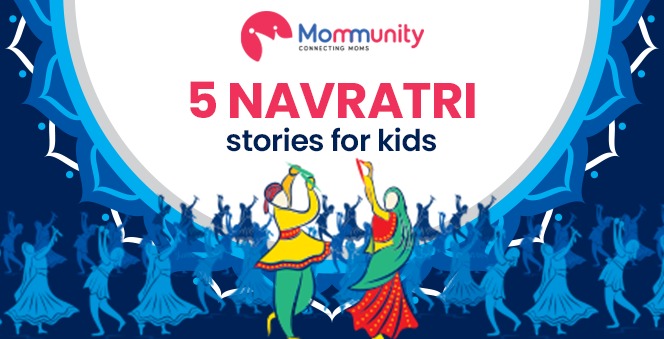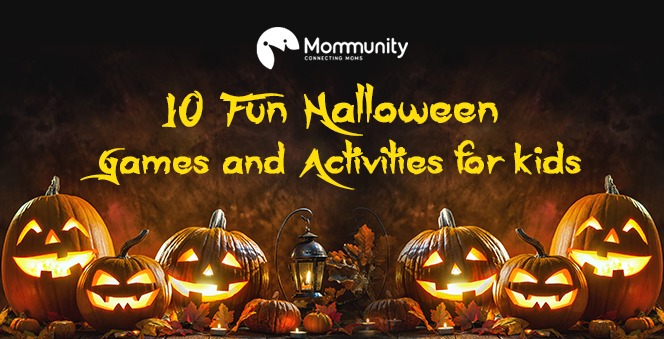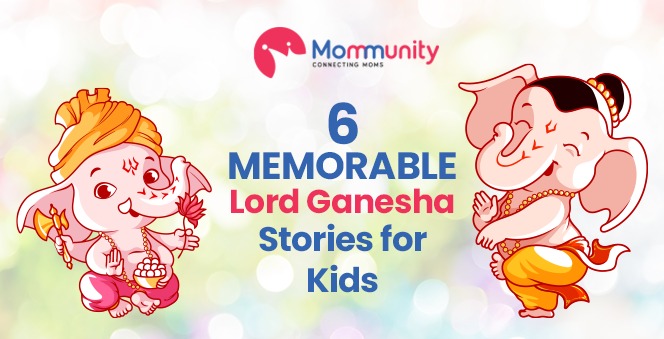Navratri is an extremely enjoyable festival for kids. A week or 15 days before the festival begins, all the children dress up and rush for Dandiya practice. Another enjoyable activity is definitely sitting at your mom’s feet and listening to stories of various gods and goddesses, whose victory is proudly celebrated each year. Enchanting Navratri Tales: Teach Kids the Significance
Let us talk about some popular legends as to why we celebrate Navratri, and how to Teach Kids the Significance
1) The Original Legend of Navratri: The daughter of King Daksha called Uma was very much in love with Lord Shiva since she was a kid. It was a moment of joy for her when Lord Shiva came to ask for her hand in marriage. King Daksha was not very happy about the way Shiva looked with his messy hair and tattered clothes.
He had ash smeared all over his body and hence, Daksha decided to not give away his daughter to such an untidy person. But his daughter was stubborn and finally ended up marrying Shiva. A few years later, the king arranged a huge Yagna and willingly did not invite Shiva to the same. This made Uma really angry and she took steps into a sacrificial fire for committing Sati. Shiva heard this and immediately came to Daksha’s house. He lifted Uma in his hands and began his popular dance known as “Tandav Nritya”. A hell of a lot of energy goes behind the terrible dance form and it literally led the entire world to come to the verge of extinction.
It was Narayana who stepped forward and cut off Uma’s body into small pieces and threw them into different parts of the country. And all the places where he threw them are known as Shakti pits or Energy Pits. Later when Lord Shiva finally calmed down, Uma was revived or given new life by Narayana. Every year on Navratri, Uma is said to come to her maternal home alongside her four sons and 2 rakhis, namely Jaya and Bijaya.
2) The Navratri Story of Mahishasura: Let us talk about the demon with the boon of non-destruction by any man or God which was a gift granted to him by Lord Shiva. When it comes to all three worlds, he was a complete terror. However, his acts were becoming more unbearable by the day. The devas started praying to Lord Shiva to grant them freedom from Mahishasura’s oppression. Shiva did a wonderful thing of combining Vishnu as well as Brahma’s powers – and created Maa Durga. She was extremely powerful and really beautiful. He asked her hand for marriage and then she laid down a condition saying that he should defeat her in battle for that to happen. He agreed. Maa Durga and Mahishasura fought for 9 days and on the 9th day, she killed him. It was the end of him at the end of the 9 days of Navratri and hence, it is celebrated as a victory of good over evil.
3) The Navratri story of killing Ravana: Remember the destruction of the powerful Lankan 10-headed Ravana? His death is celebrated and said to be memorable when the 7th avatar of Vishnu i.e. Rama destroyed Ravana. Ravana had a deep devotion to Lord Shiva and after long penances, got the boon of indestructibility from all gods and goddesses. He was too proud to mention humans. He was a corrupt king and Vishnu had to take the human Rama avatar to get rid of him. Ravana is said to have kidnapped Rama’s wife, Sita, during the completion of their exile. It was Rama, his dearest brother Laxman as well as Hanuman – who was the most loyal follower of Rama; that went to Lanka to rescue his wife and bring her home back safely. This moment of victory is celebrated as Vijayadashami.
Many figurines of Ravana are burnt all over the country and a mela is arranged for people as a happy occasion to celebrate with their families. Dussehra is definitely the finest example of a proud moment where good always wins, even if it takes time and this Teach Kids the Significance
4) The Navratri Story of Maa Chandraghanta: This is the third day of Navratri where this avatar of Goddess Durga shows us that she can be extremely loving towards her devotees while being monstrous towards her enemies. On the day of the marriage of Shiva and Parvati, he comes with a strange marriage procession that has goblins, ghouls, ghosts, skeletons, etc.
He had smeared ash all over his body and looked terrifying with snakes around his neck as well. All of Goddess Parvati’s relatives fainted in horror and left the place. To get rid of the embarrassing situation, Maa Parvati transformed herself into a frightening avatar, i.e. of Chandraghanta. She now possessed 10 arms and a golden complexion. Her last arm was to bless her devotees while the rest of the arms carried some kind of weapon. She carried Trishula, a watering pot called Kamandalu in another hand. She also carried a Gada, a Ghanta or bell as well as a Kamala or Lotus. In this terrifying form, she told Lord Shiva to transform into his noble form and he did change into a handsome prince sparkling with jewels. Their marriage finally took place and is known as “Maha Shivratri”.
5) The Navratri Story of Maa Kushmanda: Maa Kushmanda is also referred to as the Smiling Goddess who is worshipped on the 4th day of Navratri. She is said to be an avatar of pure Shakti or power and is the creator of the Universe. She is known to have removed all darkness and is the creator of 3 divine goddesses and gods too. She possesses 8 arms and her animal ride is a Tiger. Every arm carries a certain object or weapon while she is depicted with a bow and arrow, a pot of nectar, a mace, a rosary, a disc as well as Kamandalu. She is such a divine being who is the center of all energy. She blesses her devotees with wisdom, prosperity, and strength as well as keeps them safe from all troubles and hardships. Enchanting Navratri Tales: Teach Kids the Significance




